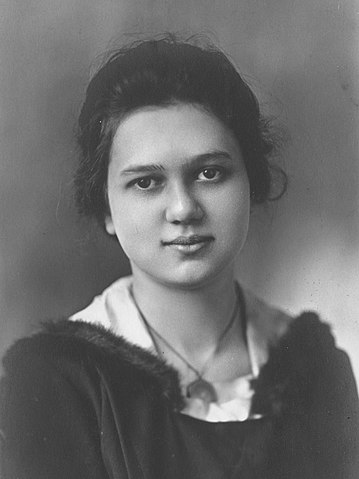Ruth Crawford Seeger (1901 – 1953)
Ruth Crawford was born about six months into the new century, and fittingly is possibly the earliest born woman to compose in a distinctively modernist style. She was also Pete Seeger’s stepmother.

Ruth Porter Crawford was born in East Liverpool, Ohio, but her family moved to Akron, St. Louis, Muncie, and Jacksonville, Florida. There she began piano lessons, continuing at the American Conservatory of Music in Chicago in 1921, where she also turned her attention to composition. Here is her Five Songs to Poems by Carl Sandburg dating from 1929:
In 1929, Ruth Crawford began studying composition with musicologist, composer, and folklorist Charles Seeger. The following year, she won a Guggenheim Fellowship: “Appointed for creative work in musical composition, abroad; tenure, twelve months from August 1, 1930,” the first woman to win one for composition. While in Europe she met Alban Berg in Vienna and Béla Bartók in Budapest. Here is a short Piano Study for Mixed Accents that she composed in 1930:
Ruth Crawford married Charles Seeger in 1932. At about the same time, she stopped actively composing to focus more on family and chronicling American folk music in connection with the Archive of American Folk Song at the Library of Congress. Her four children (Mike, Peggy, Barbara, and Penny) all became involved in folk music, and her stepson Pete, who was about 13 at the time of Ruth Crawford’s marriage to his father, also became a folksinger of note.
Most of Ruth Crawford Seeger’s compositions date from 1922 to 1932. This 1931 String Quartet, which she wrote while abroad on the Guggenheim Fellowship, is among her most famous works. (Here’s a New York Times article about the composer and the quartet.) It has four movements, but they run together: The second movement begins at 3:38 in this video, and following a fermata rest, the third movement begins at 5:57.
The third movement is the most radically conceived, featuring long notes marked with crescendos and diminuendos in a type of pulsing counterpoint. (This movement was later adapted into an Andante for Strings for performance by orchestras.) Here are measures 19 through 24 showing how the notes played by four instruments swell in relation to each other:

The full score is available on the IMSLP site. After a final fade out to pppp, the fourth movement starts attacca at 9:07 and consists of a duet of sorts alternating between a staccato first violin and the other instruments playing in rhythmic unison. The first violin has the final word.
In marriage and with raising children, she devoted more time to studies of folk music, and publishing collections of folk music for children. One exception is the Suite for Wind Quintet composed in 1952 shortly before her death: